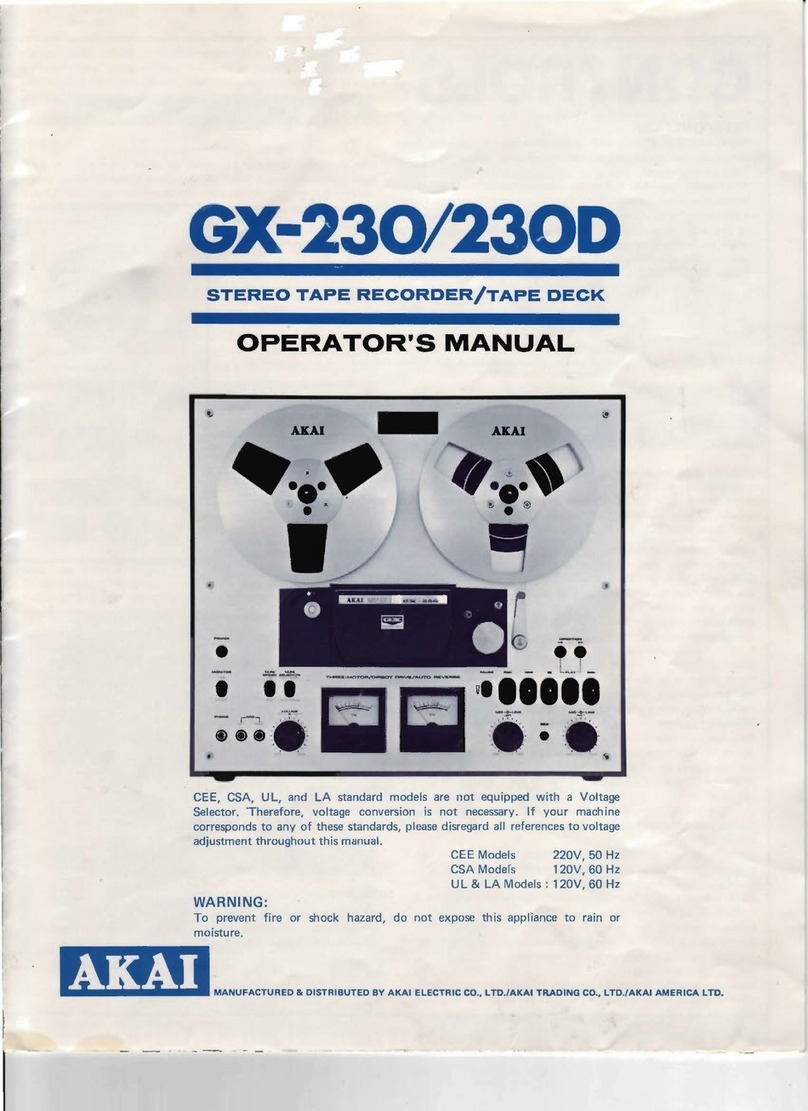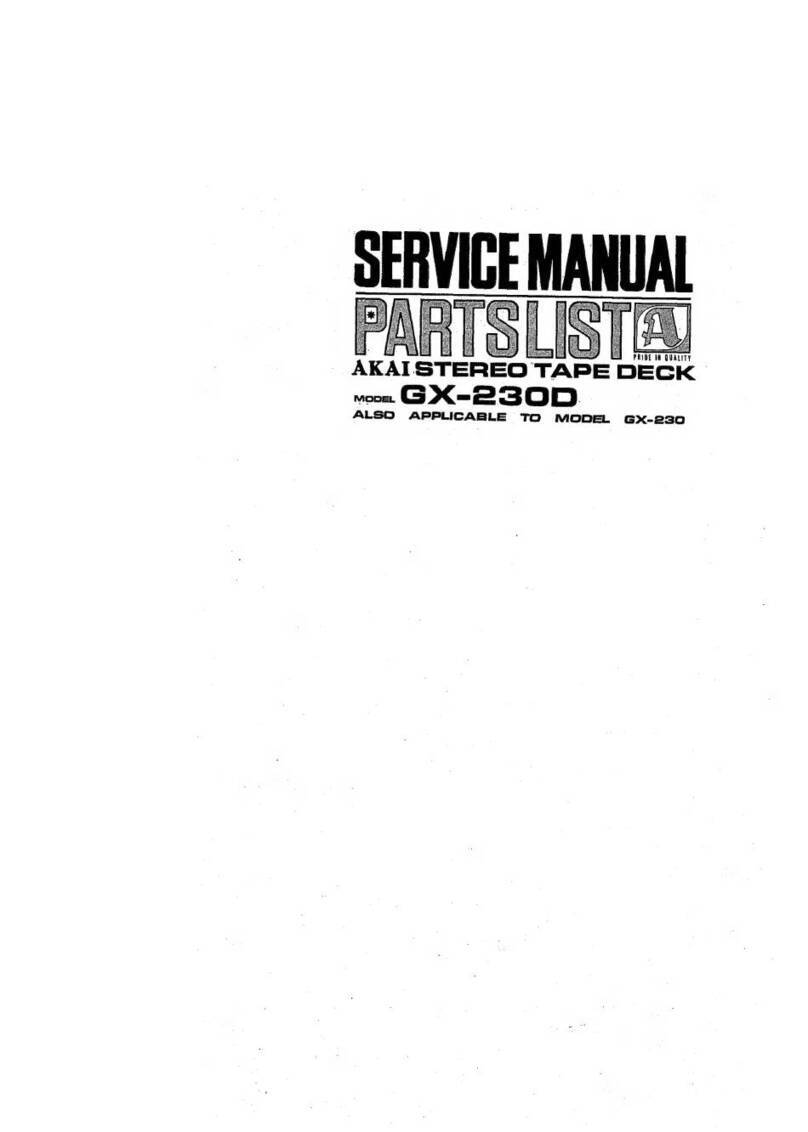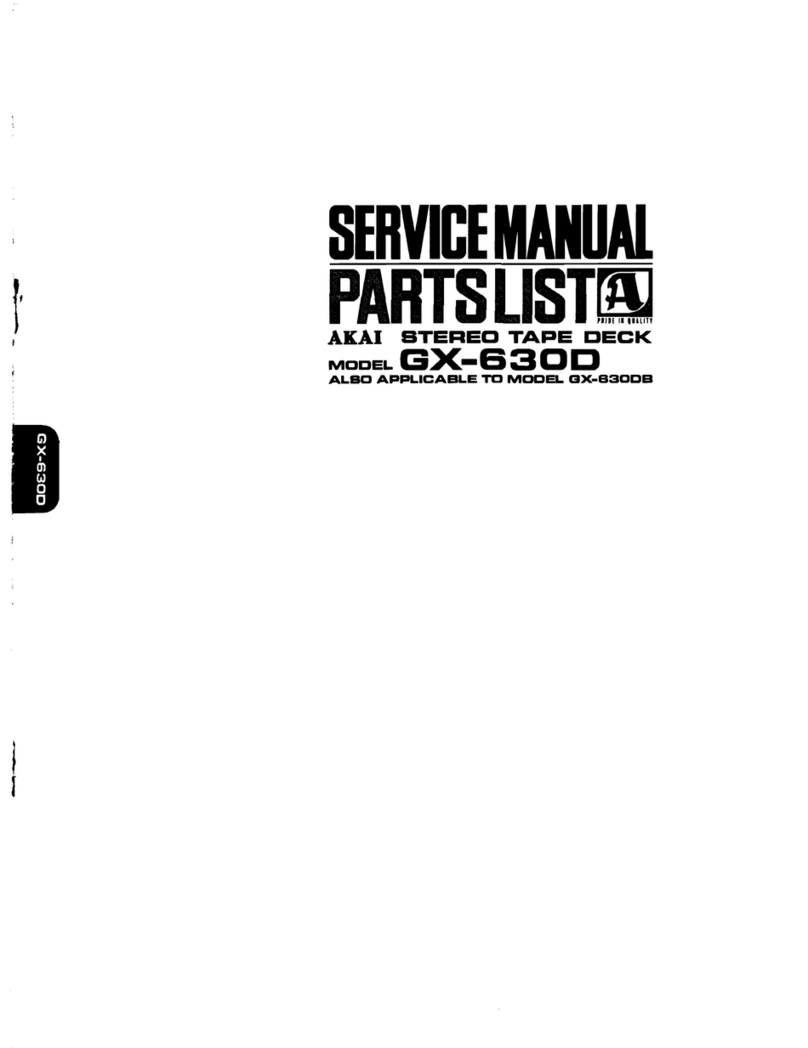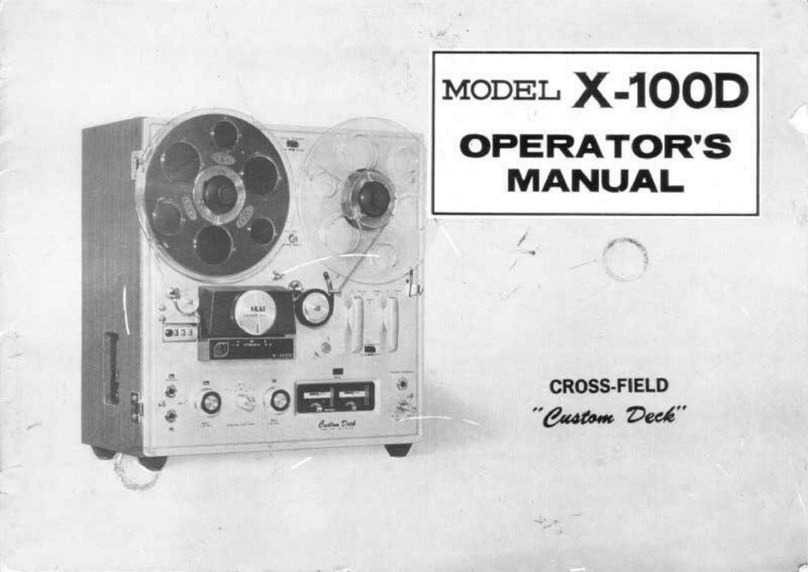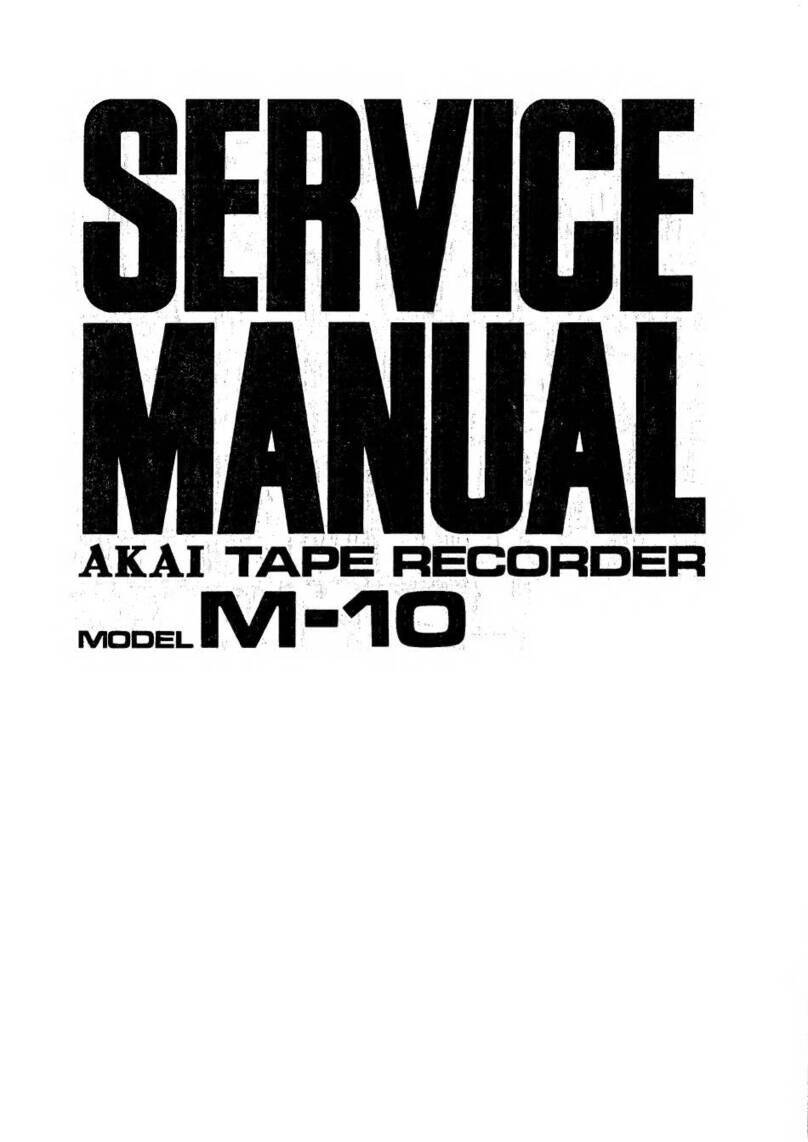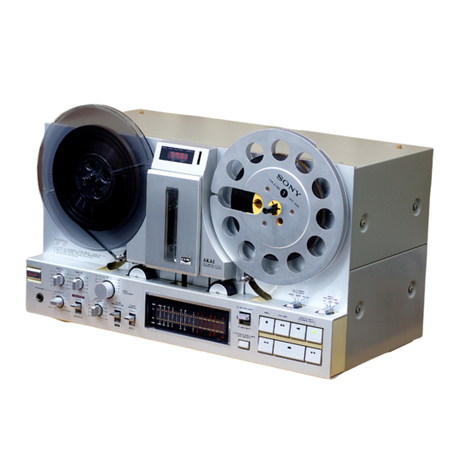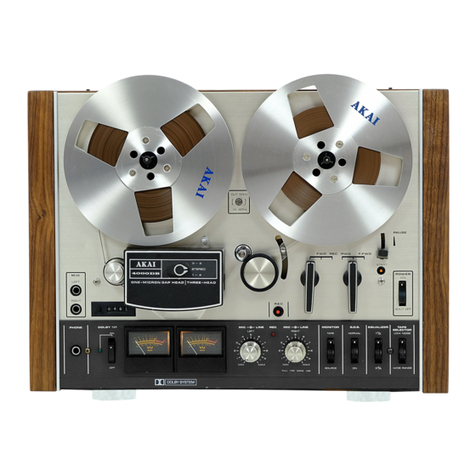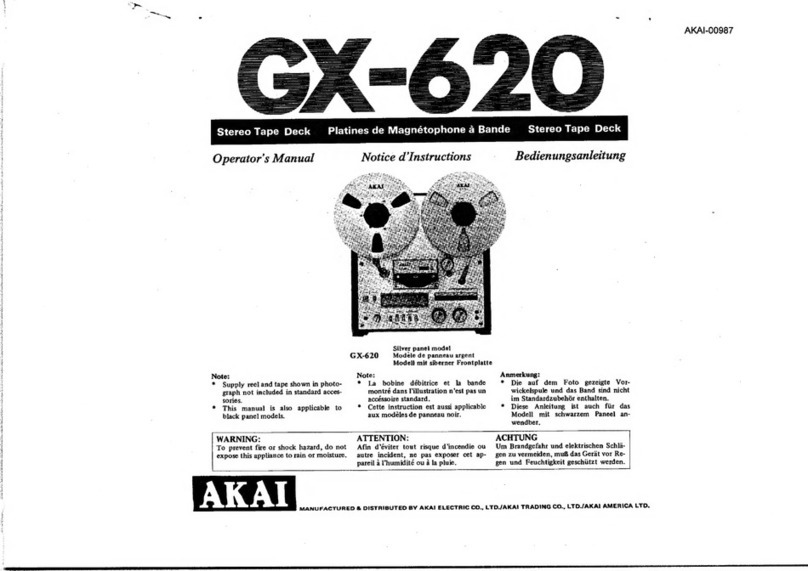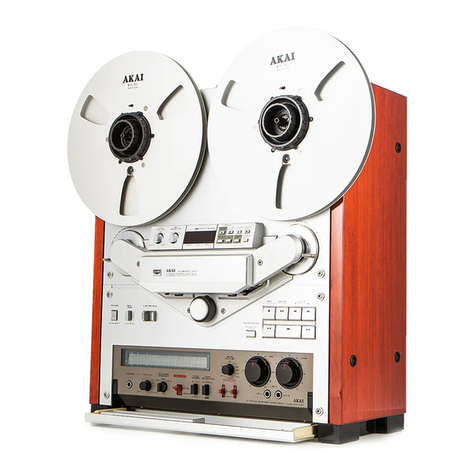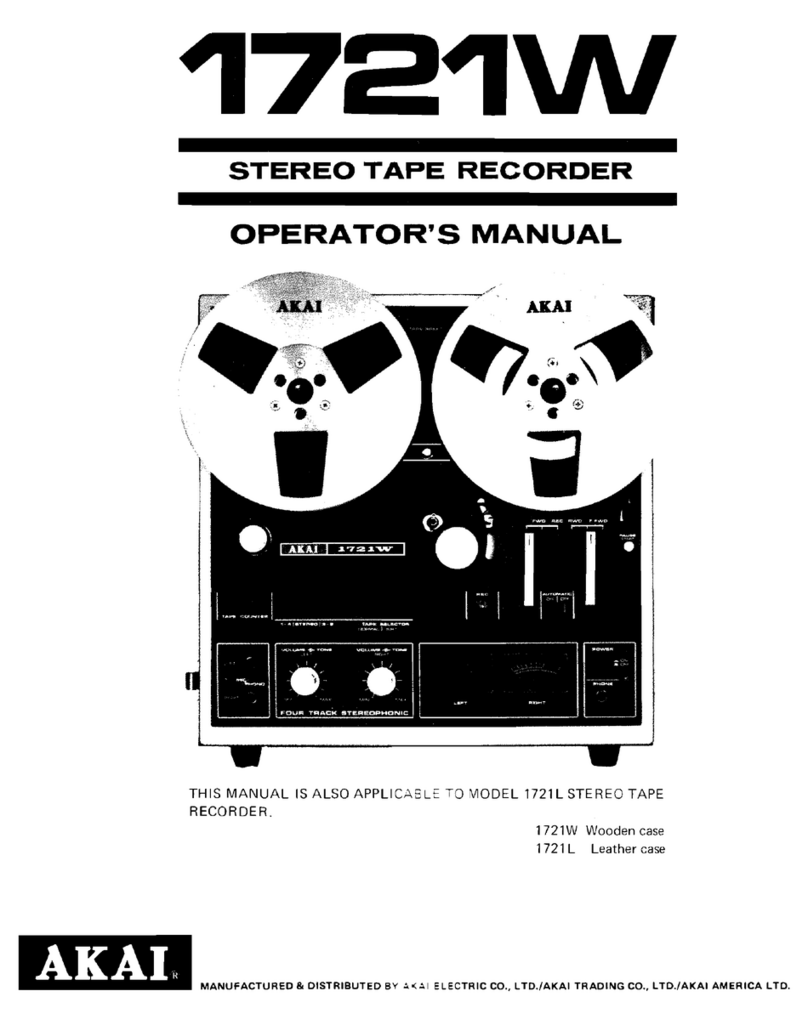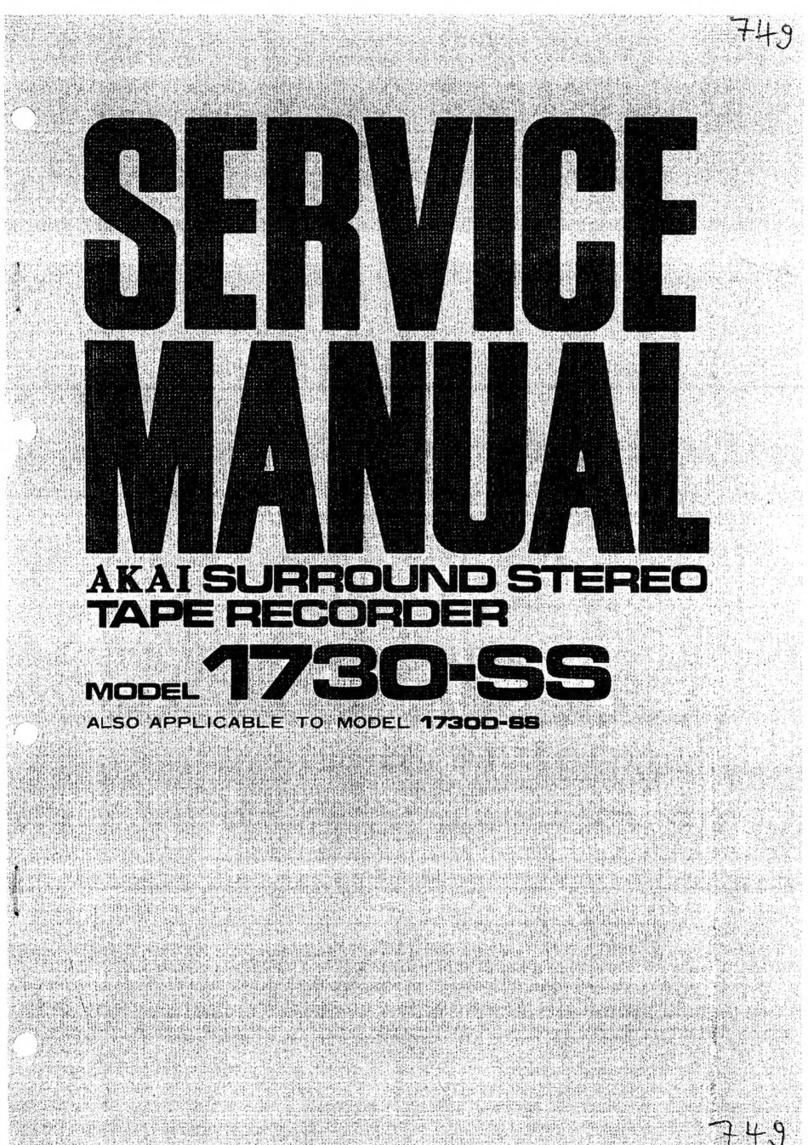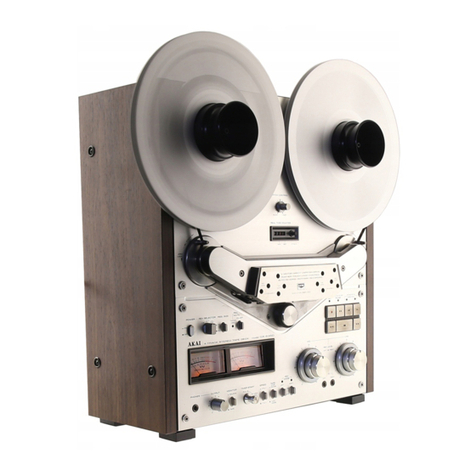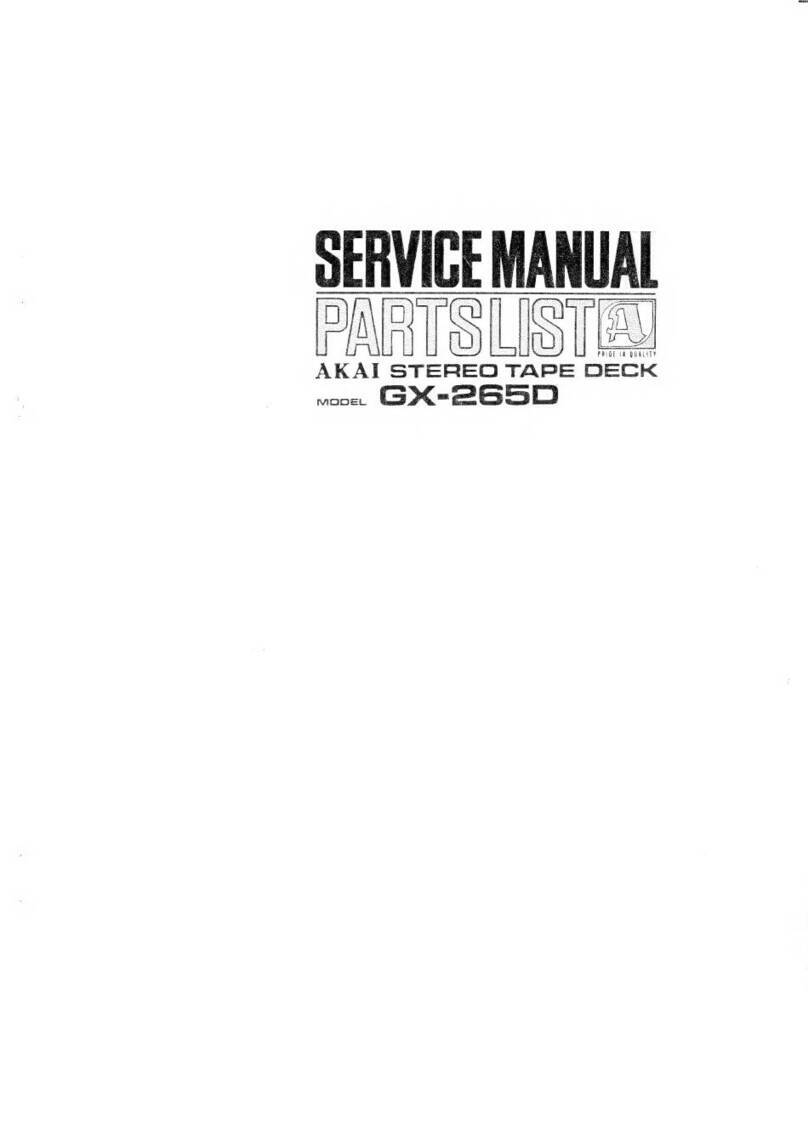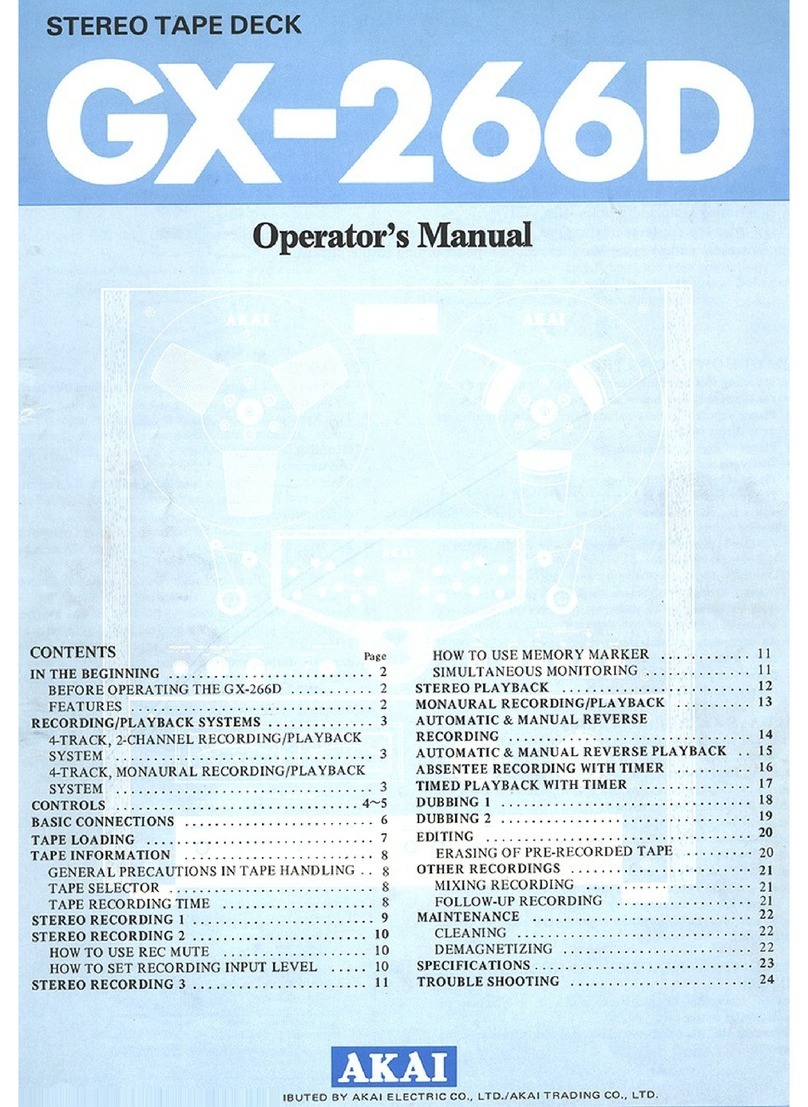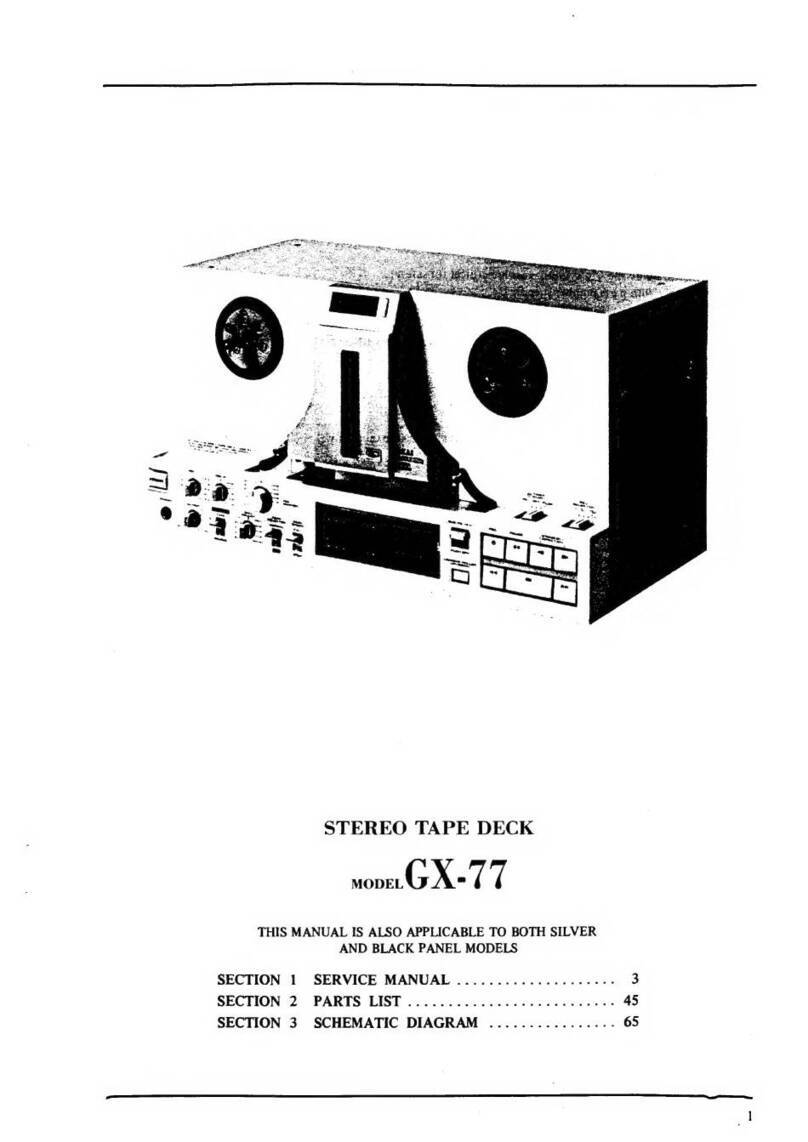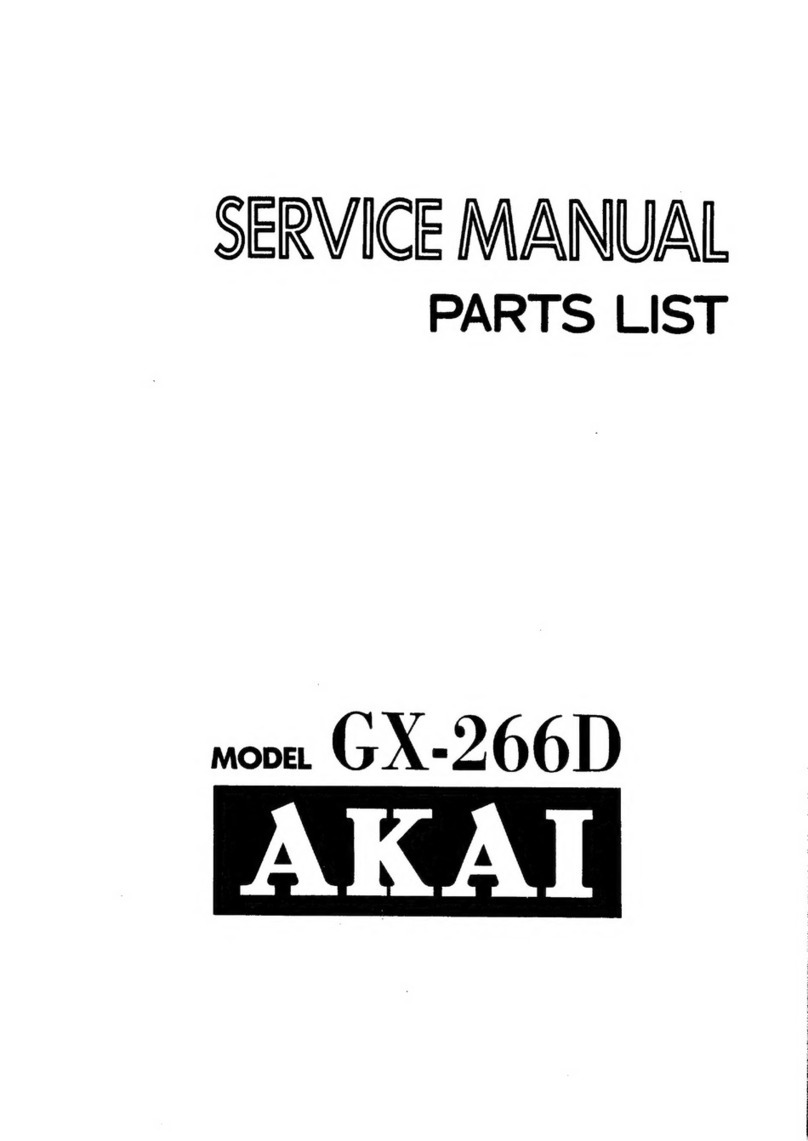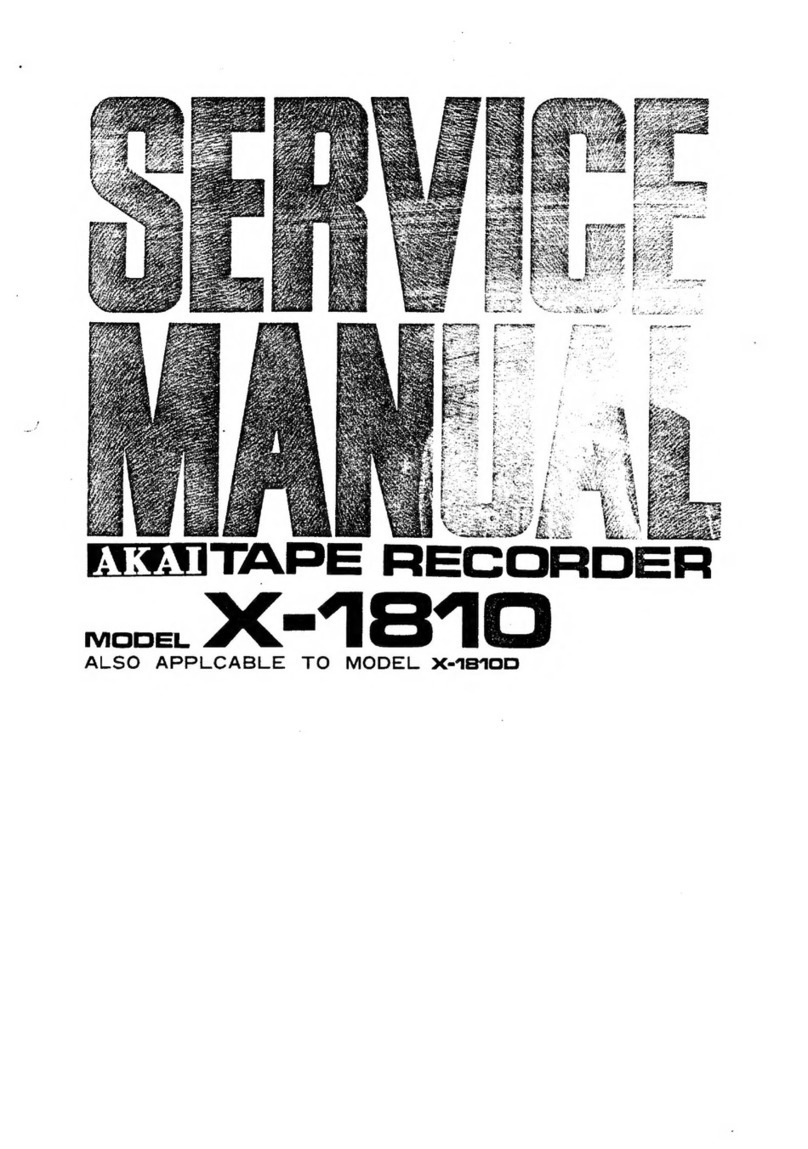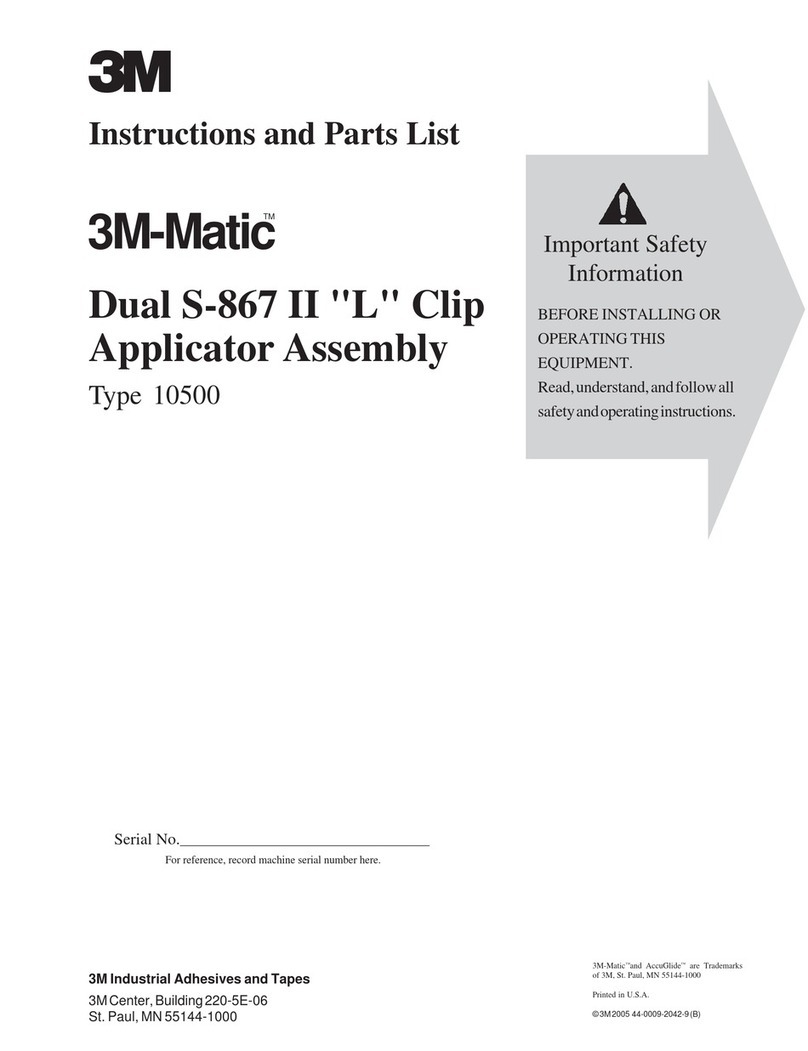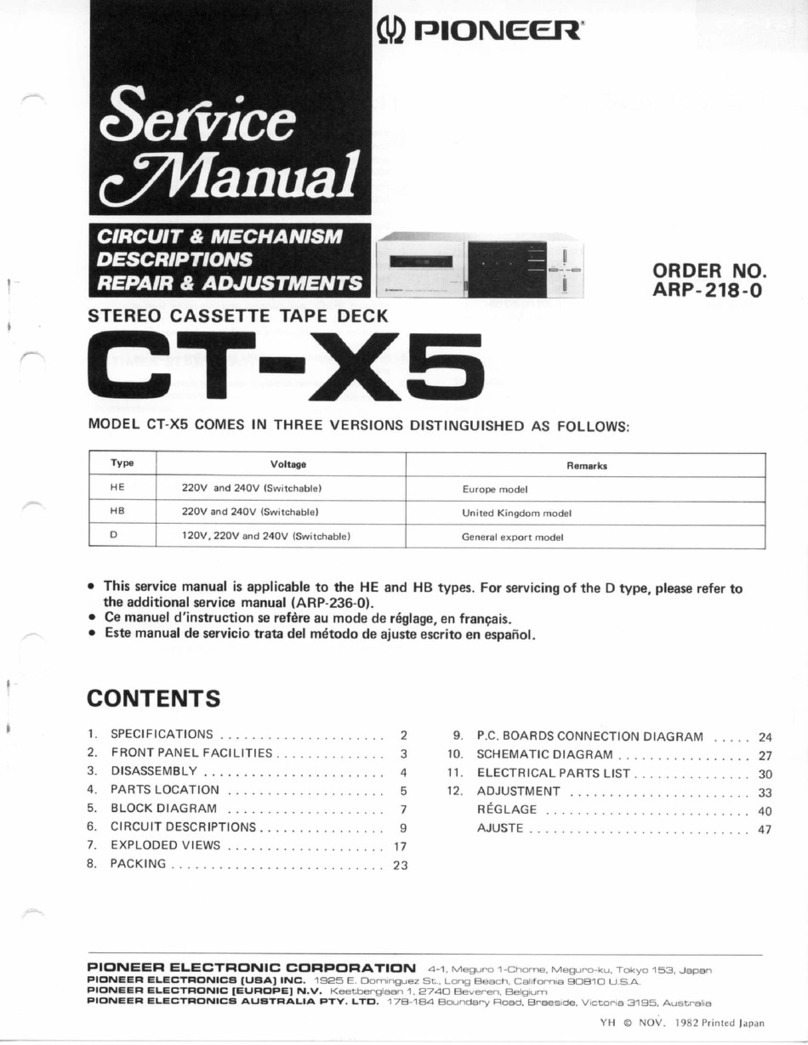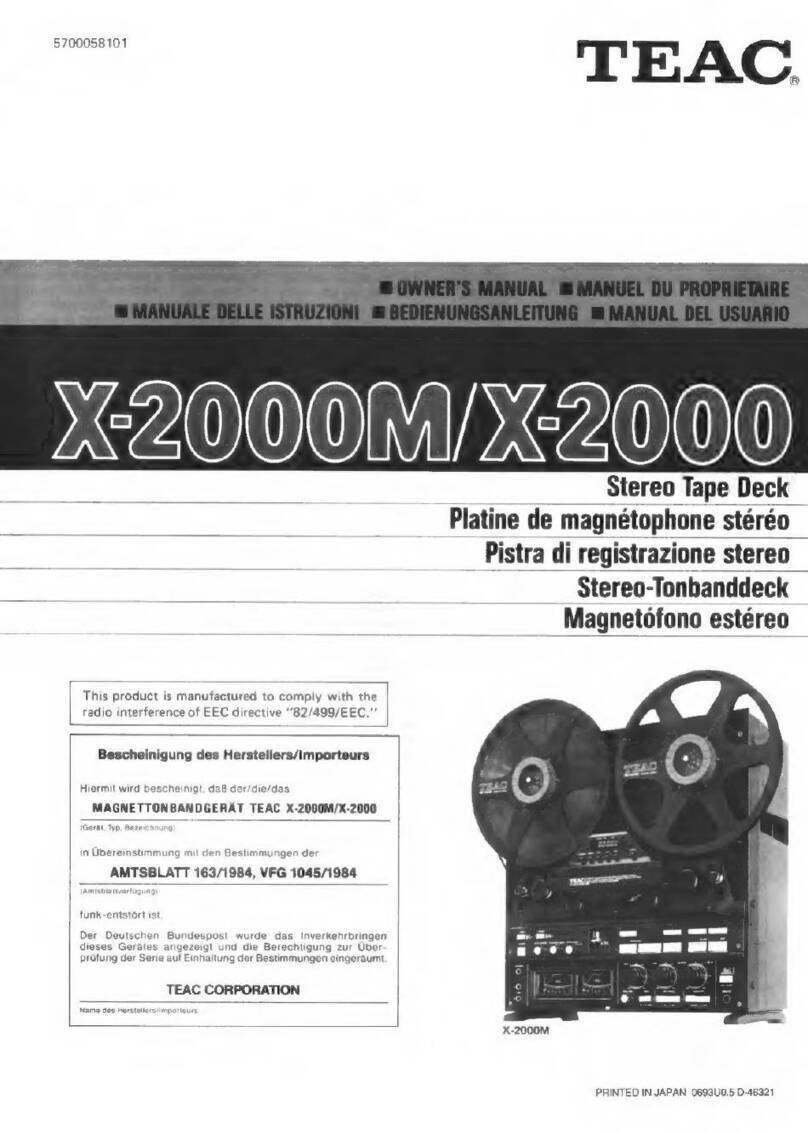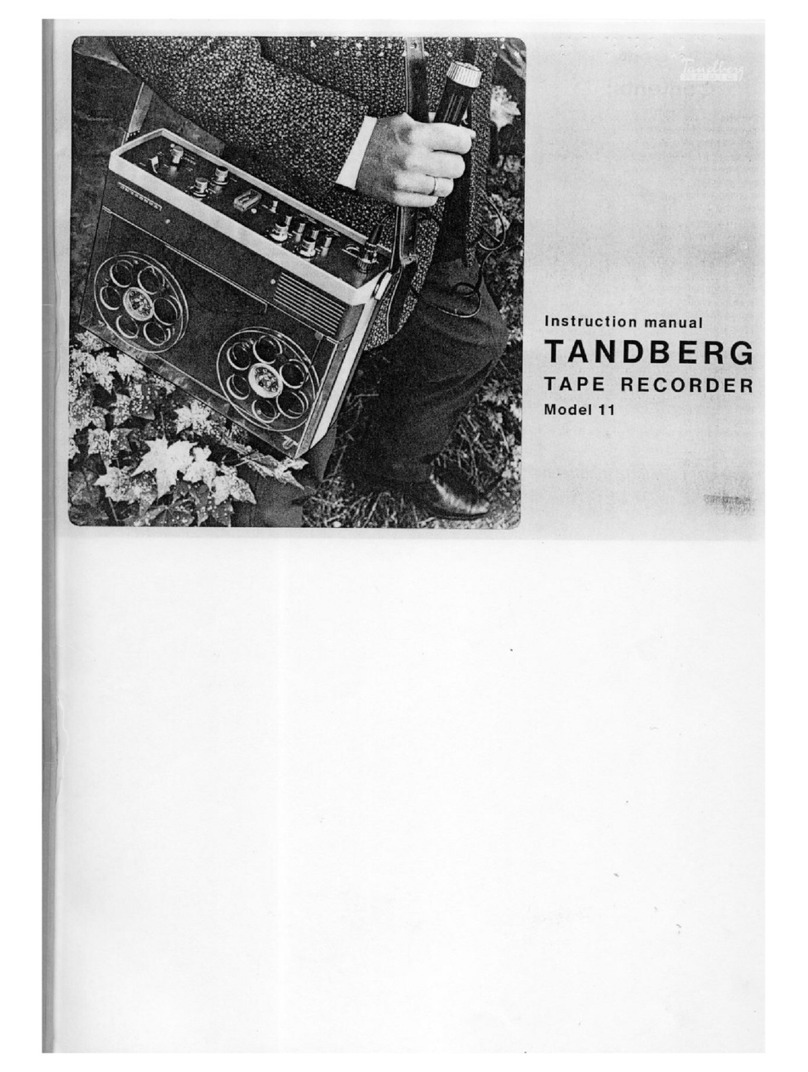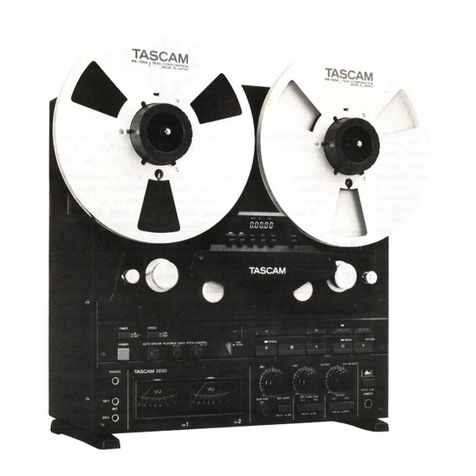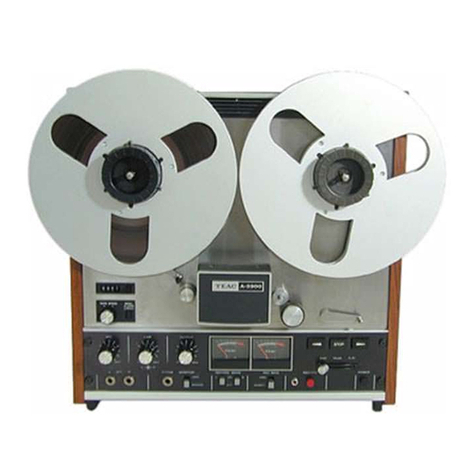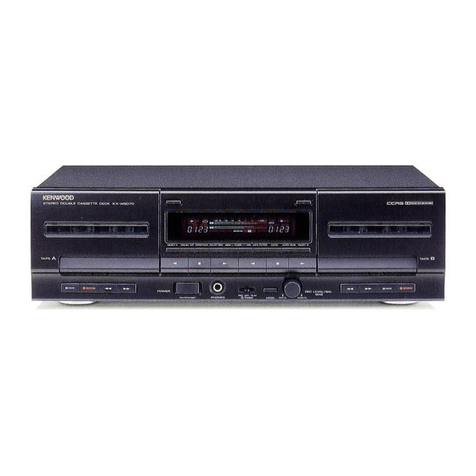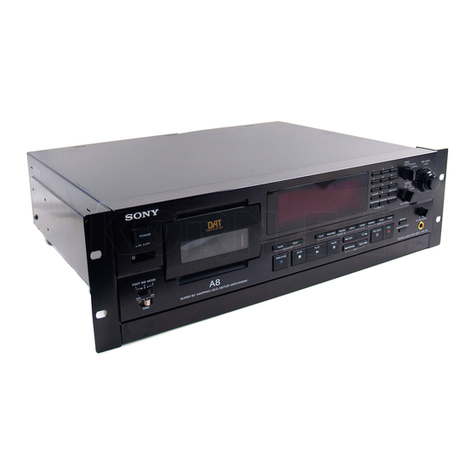
@®
SUPPLY
REEL
TABLE
®
TAPE
TENSION
LEVER
Provides
ideal
tape
tension.
©
IMPEDANCE
ROLLER
@
TIMER
START
SWITCH
When
using
an
external
timer
(sold
separately),
set
to
PLAY
for
timed
playback
or
set
to
REC
for
absentee
recording.
*
Before
turning
on
the
power,
confirm
that
the
TIMER
START
Switch
is
at
the
proper
position.
If,
for
ex-
ample,
the
TIMER
START
Switch
is
set
at
REC,
the
deck
will
automatically
start
recording
when
the
power
is
turned
on.
@®
VU
METERS
(Left
and
Right)
Indicate
left
and
right
channel
recording
and
play-
_
back
levels.
@)
POWER
SWITCH
@
REEL
SIZE
SELECTOR
Set
to
“10”
when
using
10-1/2’’
reels
and
to
a
be
when
using
7"
or
5”
reels.
@
HEADPHONE
JACK
Accommodates
8
ohm
impedance
type
stereo
head-
phones.
@
OUTPUT
LEVEL
CONTROL
Adjusts
output
level
during
playback
and
the
head-
phone
output
volume.
Set
to
correspond
with
amplifier
input.
@®
TAPE
MONITOR
SWITCH
Set
to
SOURCE
position
to
monitor
source
and
to
TAPE
position
for
playback
or
private
headphone
listening.
@
TRACK
SELECTOR
SWITCHES
(Left
and
Right
Channel
Selectors)
Depress
left
or
right
selector
for
monaural
recording
or
playback
on
left
or
right
channel.
For
stereo
recording
or
playback
depress
both
switches
simul-
taneously.
*
Caution:
Be
sure
to
select
channels
prior
to
effecting
recording
or
playback
mode.
@®
TAPE
SELECTOR
SWITCH
WIDE
RANGE
(In):
Set
to
this
position
when
using
Wide
Range
Tape.
LOW
NOISE
(Out):
Set
to
this
position
when
using
Low
Noise
Tape.
*
See
TAPE
SELECTOR
on
page
8.
@
TAPE
SPEED
SELECTOR
Set
to
7-1/2
or
3-3/4
in
according
to
desired
speed.
@
RECORDING
MUTE
When
the
Recording
Mute
is
engaged
signals
will
not
be
recorded
on
the
tape.
REC
button
will
flash
on
and
off
when
Recording
Mute
is
engaged.
@
MICROPHONE
INPUT
CONTROLS
(REC
LEVEL
MIC)
Used
for
adjusting
recording
input
level
for
micro-
phone
input
and
when
using
the
DIN
Jack.
The
inner
knob
is
for
the
left
channel,
and
the
outer
ring
for
the
right.
To
allow
simple
Fade-In
and
Fade-Out,
the
left
and
right
controls
are
not
only
made
coaxial
ard
(3)
FIXE-BOBINE
INCORPORE
(gauche)
Pour
verrouiller
la
bobine
en
place,
tirer
vers
l’ex-
térieur
lextrémité
du
fixe-bobine
puis
la
tourner
vers
la
droite
ou
vers
la
gauche.
(4)
PLATEAU
DE
BOBINE
DEBITRICE
®
LEVIER
DE
TENSION
DE
BANDE
Assure
une
tension
parfaite.
ROULEAU
D’IMPEDANCE
COMMUTATEUR
DE
MISE
EN
MARCHE
DE
MINUTERIE
(TIMER
START)
Mettre
le
commutateur
sur
PLAY
pour
une
lecture
mise
en
marche
4
laide
de
la
minuterie
ou
sur
REC
pour
un
enregistrement
autonome,
lors
de
l’utilisa-
tion
d’une
minuterie
extérieure
(vendue
séparé-
ment).
*
Vérifier
que
le
commutateur
de
mise
en
marche
de
minuterie
est
en
position
correcte,
avant
de
mettre
lap-
pareil
sous
tension.
Par
exemple,
au
cas
ou
le
commuta-
teur
TIMER
START
est
sur
ta
position
REC,
la
platine
commencera
automatiquement
!’enregistrement
lorsque
l'appareil
est
mis
sous
tension.
@)
VU-METRES
(gauche
et
droit)
Indiquent
les
niveaux
de
lecture
et
d’enregistrement
des
canaux
droit
et
gauche.
‘)
INTERRUPTEUR
GENERAL
a?
SELECTEUR
DE
TAILLE
DE
BOBINE
Le
mettre
sur
“10”
lors
de
Putilisation
de
bobines
de
10-1/2”
et
sur
“7”
lors
de
l'utilisation
de
bobines
de
7”
ou
5”.
@
PRISE
DE
CASQUE
(PHONE)
Prévue
pour
des
casques
stéréo
du
type
4
impédance
de
8
ohms.
|
@
COMMANDE
DE
NIVEAU
DE
SORTIE
(OUTPUT)
Permet
de
régler
le
niveau
de
sortie
a
la
lecture
et
le
volume
de
sortie
des
casques.
Effectuer
ce
réglage
en
fonction
de
entrée
de
l
amplificateur.
@
COMMUTATEUR
DE
MONITEUR
DE
BANDE
(MONITOR)
Le
régler
sur
la
position
SOURCE
pour
contréler
la
source
et
sur
TAPE
pour
la
lecture
ou
l’écoute
in-
dividuelle.
4)
COMMUTATEURS
DU
SELECTEUR
DE
PISTE
(Sélecteurs
des
canaux
gauche
et
droit)
Appuyer
sur
le
sélecteur
droit
ou
gauche
pour
un
enregistrement
ou
une
lecture
monophonique
sur
Je
canal
droit
ou
gauche.
Pour
un
enregistrement
ou
une
lecture
stéréo,
appuyer
simultanément
sur
les
deux
commutateurs.
*
Attention:
Ss:
assurer
de
sélectionner
les
canaux
an-
térieurement
a
la
lecture
ou
a
l’enregistrement.
@
COMMUTATEUR
DU
SELECTEUR
DE
BANDE
WIDE
RANGE
(Position
enfoncée):
Le
régler
sur
cette
position
lorsque
des
bandes
4
gamme
étendue
sont
utilisées.
LOW
NOISE
(Position
non
enfoncée):
Le
régler
sur
cette
position
lorsque
des
bandes
@
faible
bruit
sont
utilisées.
*
Voir
SELECTEUR
DE
BANDE
8
la
page
8.
4)
SELECTF!'®
DE
VITESSE
DE
BANDE
~~
6
a
Sicherung
nach
auBen
zighen
tnd
sie
nach
links
oder
rechts
drehen.
@
ABLAUFBANDTELLER
@®
BANDZUGARM
Ermdglicht
die
ideale
Bandspannung.
©
IMPEDANZROLLE
@
TIMER-STARTTASTE
Wenn
Sie
einen
Aufen-Timer
(wird
separat
varkauft)
benutzen,
steilen Sie
auf
PLAY
fiir
eine
zeitge-
steuerte
Wiedergabe
oder
auf
REC
fiir
eine
Auf-
nahme
wahrend
Ihrer
Abwesenheit.
*
Bevor
Sie
den
Strom
einschalten,
vergewissern
Sie
sich,
da&
die
Timer-Starttaste
in
der
richtigen
Stellung
ist.
Wenn
die
Taste
z.B.
auf
REC
gestelit
ist,
wird
das
Geriit
automatisch
mit
der
Aufnahme
beginnen,
sobald
Sie
den
Strom
einschalten.
@®
VU-AUSSTEUERUNGSINSTRUMENT
(links
und
rechts)
Zeigen
den
Aufnahme-
und
Wiedergabepegel
des
linken
und
rechten
Kanals
an.
@
STROMSCHALTER
@
SPULENGROSSE-WAHLSCHALTER
Bei
der
Verwendung
von
27
cm-Spulen
(10-1/2)
schalten
Sie
auf
“10”
wnd
bei
18
cm-(7)
oder
13
cm-Spulen
(5)
auf
“7”,
@
KOPFHORER-BUCHSE
Hier
k6nnen
Stereo-Kopfhorer
mit
einer
Impedanz
von
8
Ohm
angeschlossen
werden.
@
AUSGANGSPEGELREGLER
Reguliert
den
Ausgangspegel
wihrend
der
Wieder-
gabe
und
die
Ausgangslautstérke
des
Kopfhorers.
Stellen
Sie
den
Regler
der
Lautsprecher-Eingangs-
leistung
entsprechend
ein.
@®
MONITORTASTE
Wenn
Sie
wihrend
einer
Aufnahme
das
Original
hdren
mochten,
stellen
Sie
diese
Taste
auf
SOURCE
und
auf
TAPE,
wenn
Sie
die
Wiedergabe
oder
tiber
die
Kopfhorer
héren
mochten.
@
SPURENWAHLHEBEL
(linke
und
rechte
Kanal-
wahltasten)
Driicken
Sie
die
rechte
oder
linke
Wahltaste
fiir
die
Mono-Aufnahme
oder
-Wiedergabe
auf
dem
linken
oder
rechten
Kanal.
Fiir
die
Stereo-Aufna-
‘hme
oder
-Wiedergabe
driicken
Sie
beide
Tasten
pleichzeitig.
*
Achtung:
Wahlen
Sie
die
Kanale
vor
der
Aufnahme
oder
Wiedergabe.
@®
BANDWAHLSCHALTER
WIDE
RANGE:
Wahlen
Sie
diese
Stellung
bei.der
Verwendung
von
Wide-Range-Bandern.
LOW
NOISE:
Wahlen
Sie
diese
Stellung
bei
der
Verwendung
von
Low-Noise-Bandern,
*
Siehe
‘“BANDWAHLSCHALTER’”
auf
Seite
8.
@
BANDGESCHWINDIGKEITS-WAHLSCHALTER
Der
gewiinschten
Geschwindigkeit
entsprechend
auf
7-1/2
oder
3-3/4
stellen.
@
AUFNAHME-STUMMABSTIMMTASTE
Wenn
Sie
diese
Taste
wahrend
einer
Aufnahme
driicken
werden
keine
Signale
auf das
Band
auf-
